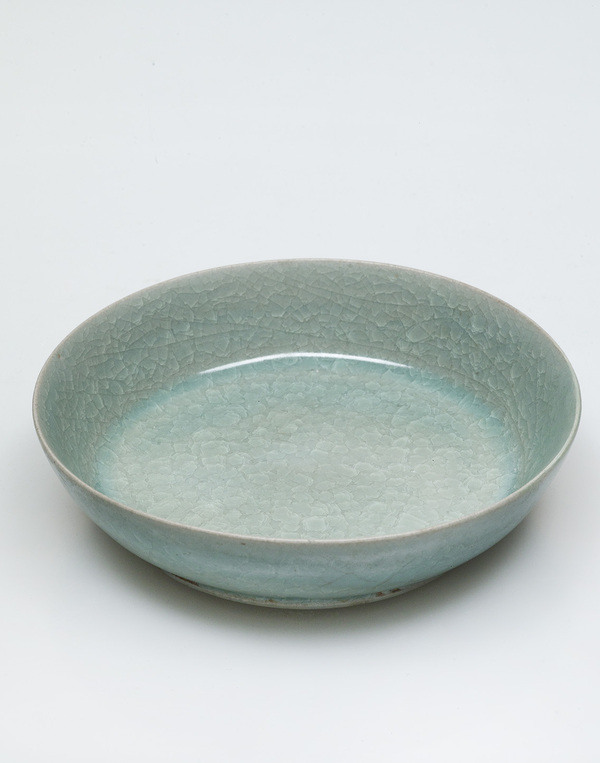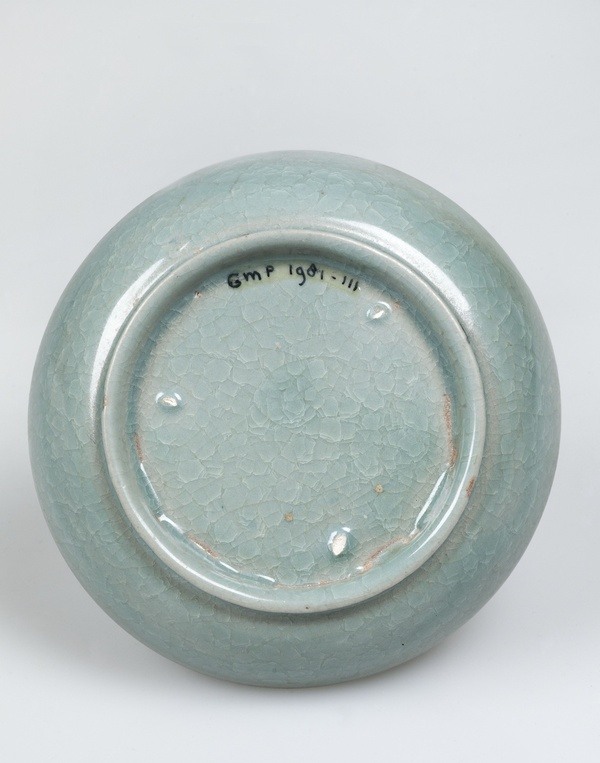Ru bowl, China, Northern Song dynasty (960 - 1127), stoneware, h. 3,4 cm, Ø 13 cm.
A Ru brush washer auctioned by Sotheby’s in 2017 sold for over 30 million euros. Only 79 pieces of Ru have survived, most of which are in the collection of the Palace Museum in Taipei. The Percival David Collection in the British Museum in London includes several Ru objects. The Princessehof owns just one: a small bowl, which was very generously donated to the museum by a Dutch collector in 1981. The bowl has proved to be not only an important addition to our collection, but also a national asset in the field of Asian ceramics.
It doesn’t look that spectacular for something so highly prized. There’s nothing extraordinary about the shape of the small bowl, which was used to clean brushes, and it is completely undecorated. It’s not really what you would expect of an expensive piece of Chinese ceramics. So, what makes it so special? Like most Ru objects, it has a simple shape and a very nice, crackled glaze, which isn’t shiny yet has a lot of depth, just like jade, which the Chinese value highly. This small bowl is not a ‘Wow!’ object, but represents a particularly refined and cultivated imperial taste. It is a masterpiece of understatement. Needless to say, it is very well guarded in the Princessehof.
Highpoint in the history of ceramics
The reason that Ru was only made for a brief period is because nomadic tribes from the north attacked China during the reign of Song Emperor Huizong. The emperor fled to the south and settled in Hangzhou. Here, however, he no longer had access to the Ru kilns and so he asked local potters to make imitations of the famous ceramics. This led to the creation of a new type, called Guan, which means ‘official’ in Chinese.
Ru and Guan, together with Ge, Jun and Ding, form the five types of ceramics that were made exclusively for the imperial court during the Song Dynasty. In later periods these types of ceramics were likewise appreciated for their simple shapes, refinement and beautiful glazes. For the Chinese elite, such objects were the highpoint of ceramic history. They were therefore coveted collector’s items that were admired and discussed during scholar’s gatherings. Emperor Qianlong, who ruled during the eighteenth century, was so enchanted by Ru wares that he had his poems praising the objects engraved on some objects. However, not everyone was happy that he had irreversibly damaged the famous Ru pieces in this way with his eulogies.
Eva Ströber, former curator of Asian ceramics at the Princessehof National Museum of Ceramics, with thanks to Aafke Koole.

